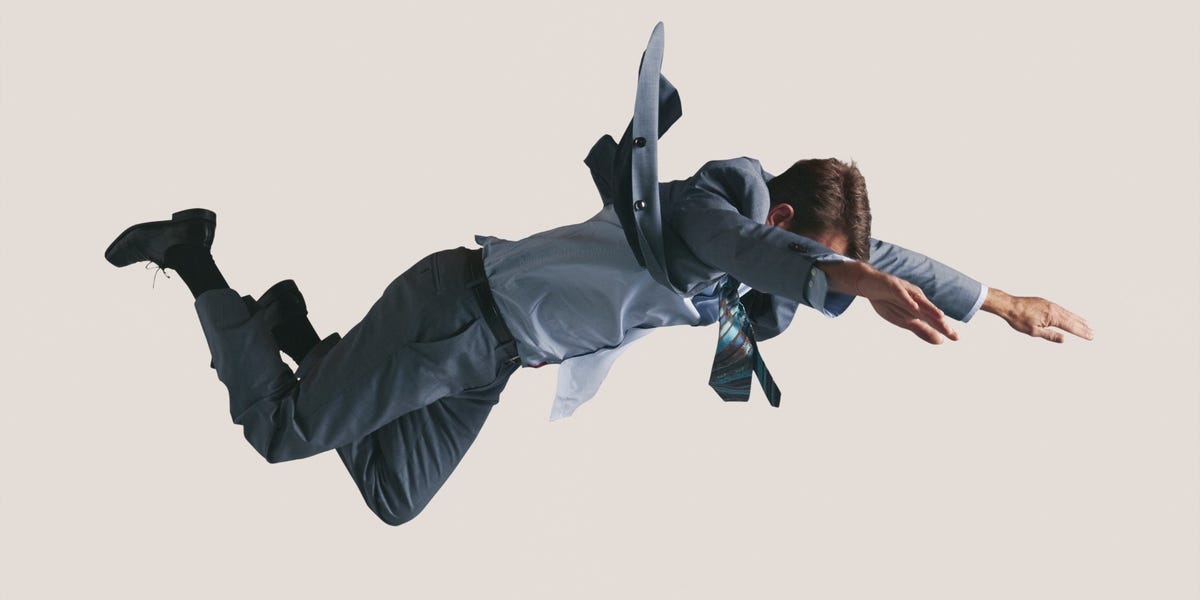A leading company focused on virtual transformation.
It’s only a matter of time before America takes Brooks Brothers to the guillotine.
The retailer, the oldest in the country, is not only a Wall Street fashion supplier, but it is also an emblem of America’s superior elegance and all-white blue-blooded glory.
Last month, he filed for bankruptcy.
But it’s not the only informal business store that went bankrupt this year: J. Crew, Men’s Wearhouse, Lord and Taylor and Neiman Marcus also filed for bankruptcy.
Once, two decades ago, many demonstrators, including Trump associate Roger Stone, dressed almost entirely as Brooks Brothers, descended to South Florida to protest the recount of an almost tied presidential election. It was a revolutionary moment in American politics when the protest became a landmark Supreme Court decision, Bush opposed Gore, ensuring that each and every vote would not be counted before the presidency’s decision. It ended up being called “the Brooks Brothers Mutiny,” a call coined through a crusade assistant to George W. Bush.
Flash before the long, hot summer of 2020, and protesters are back on the streets, but it’s hard to locate any of them wearing something like Brooks Brothers. In fact, the logo made a remarkable appearance in the form of anti-protesters: a married couple of lawyers from St. Louis, who wore weapons as protesters marched (peacefully) in front of the mayor’s house.
As Cintra Wilson of Town and Country wrote, Brooks Brothers had a “what deserves not to be brought into revolution.”
Fashion was also a dividing line of the French Revolution just over two centuries ago, when the lower-class bourgeoisie of the late 18th century separated from the aristocrats of the time dressed in vests and panties dressed in homemade ankle trousers. They were called no pants or “no panties.”
The retail industry has experienced difficulties as a sector for some time with a major disruption of e-commerce and, more recently, occasional practical needs of the home work era. But the decline of classic American fashion would possibly also show how long the tensions of elegance have been boiling.
This pandemic year he remembered the French Revolution in other ways, as when Ivanka Trump posed with a box of Goya, a “let them eat beans” moment reminiscent of Marie Antoinette’s infamous, perhaps apocryphal, “let them eat cake.”
The aristocratic and high-end fashion of the major era modeled through Antoinette, with the help of stylist Rose Bertin, and has become synonymous with exaggerated indulgence and sumptuous presentations of wealth.
The women wore watteau suits with a loose back, a French suit with necklines and giant ribbon ties; the heels had ornaments and powdered hair and covered with lace handkerchiefs. As the history of European fashion goes, women powder their hair with wheat flour and flour, a fad that came to be noticed as a scandalous waste for declining categories as the value of bread began to rise.
The men wore ornamental vests, with panties that reached to the knee, white silk stockings and heels.
This was also the moment when fashion magazines began to emerge, which meant that the people of the streets of Paris were well aware of what was brought to the royal court of Versailles.
Enter the unstable, who believed in the idea, new at the time, that all men are equal. They despised those who controlled giant homes and businesses at the expense of those around them, believed that they all owned at least one property, sought food taken from giant landowners and handed over to small workshops, and sought to tax the rich.
Today’s culottes have strangely similar political beliefs, and instead of not dressing in panties, they go without Brooks: largely masked and dressed in T-graphic melodies that say “Black Lives Matter.” Now we even have Instagram and Twitter to keep up with the latest ramblings from the rich. We have notable democratic socialists advocating for policies without panties, such as Bernie Sanders and Alexandria Ocasio-Cortez, and opinion polls have shown that more and more Americans agree with them.
Just as other unsized people saw the taste of the aristocracy as a symbol of its oppression, our society would possibly have come to see the suit, polo shirts, tight shirts, khaki pants (both long and short) and perfectly knotted. Sweaters. around the shoulders, as a symbol of a superior elegance that many are the cause of so much fashionable oppression.
Mark and Patricia McCloskey, St. Louis’s lawyers who have become famous after brandishing guns that oppose Black Lives Matter protesters, did so by wearing, in a sense, a uniform: Patrica dressed in a striped blouse with leggings ending – waits – on the knee. Mark wore a pink polo blouse from Brooks Brothers and khaki trousers with a belt at the waist.
Meanwhile, as Town and Country also published, far-right figures like Richard Spencer only followed the Nazi hairstyles of the 1930s, but a wardrobe featuring, as the Washington Post says, “three-piece costumes by Brooks Brothers, gold-piece twins and Swiss watches at $5,000.”
These modes give rise to photographs of politicians and bankers, elite Ivy League establishments with $1 billion in donations and top-notch jobs at Goldman Sachs. Vanessa Friedman of The New York Times commented on the emergence of J. Crew in the 1980s as a “New England prepster style” logo connected to an ambitious type of recreation that the most has never enjoyed. It’s the fashion of white America, the fashion of ideal American, the fashion of power.
The new American ideal that emerges from today’s revolutionary moment may have a uniform that includes sportswear and sweaters that say “Eat the Rich.” Replacement orders will be on Twitter and Instagram, and other people will always, as they did, take to the streets.
They would do so in the context of Melania Trump, dressed in Ralph Lauren’s cashmere, reorganizing the White House Rose Garden, just as Marie Antoinette meticulously cared for her gardens at Versailles before the panties fell on the palace.

